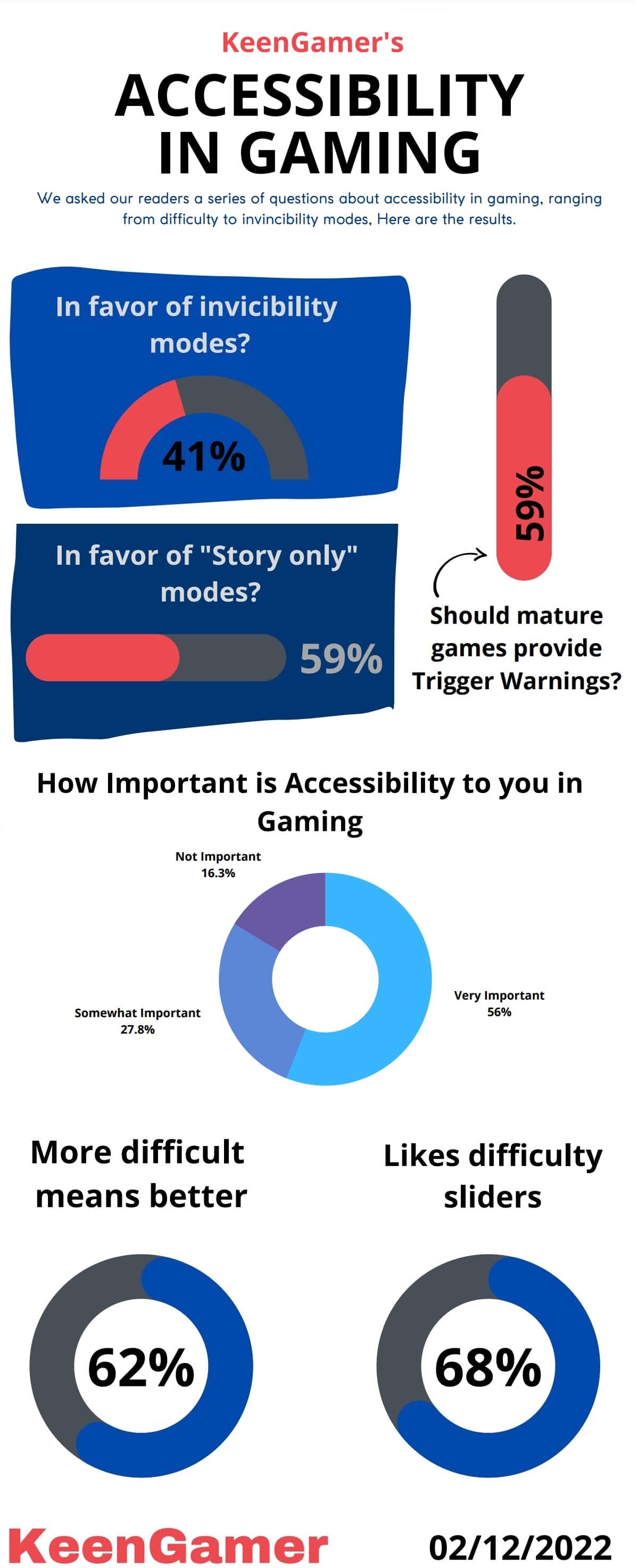Impact Of Game Industry Downsizing On Accessibility Features

Table of Contents
Reduced Development Time and Resources
Downsizing significantly impacts the development and implementation of effective accessibility features. This is primarily due to reduced time and resources allocated to this crucial aspect of game development.
Fewer Dedicated Accessibility Developers
Downsizing often leads to the reduction or elimination of specialized accessibility teams. This means fewer developers are responsible for a wider range of tasks, leading to several critical problems:
- Reduced testing and debugging of accessibility features: Less time is dedicated to rigorous testing, increasing the likelihood of bugs and usability issues slipping through. This impacts everything from screen reader compatibility to controller customization options.
- Slower implementation of new accessibility options: The development pipeline for new accessibility features slows down considerably, meaning players might have to wait longer for crucial updates and improvements.
- Potential for overlooked accessibility bugs: With fewer eyes on the accessibility code, critical bugs that impact user experience for disabled players can go unnoticed until after the game’s release.
Compromised Accessibility Testing
Limited resources directly translate to less comprehensive accessibility testing. This includes:
- Reduced user testing with disabled players: User testing with disabled players provides invaluable feedback, but budget cuts often limit or eliminate this crucial step. This results in a less user-friendly experience for the target audience.
- Less comprehensive accessibility audits: Formal accessibility audits are often cut, meaning potential accessibility issues might not be identified before launch.
- Increased risk of accessibility failures after launch: The lack of proper testing leads to a higher chance of encountering significant accessibility issues post-release, potentially requiring costly and time-consuming patches.
Prioritization of Core Gameplay Features
During cost-cutting measures, accessibility features in games are frequently deemed secondary to core gameplay elements and visual fidelity.
Accessibility Features Often Viewed as Secondary
Budget constraints often force developers to make difficult choices, and unfortunately, accessibility features frequently fall to the bottom of the priority list. This results in:
- Features are cut or delayed to meet deadlines: Accessibility features are often the first to be cut to meet tight release schedules.
- Less investment in innovative accessibility solutions: Resources for developing cutting-edge accessibility technologies are significantly reduced, stifling innovation in the field.
- Basic accessibility features may be implemented poorly: Even basic features like subtitles or adjustable difficulty settings might be implemented poorly, hindering their effectiveness.
Impact on Player Base
This prioritization of core gameplay over accessibility has significant consequences for the player base:
- Loss of potential sales from the disabled gaming community: By neglecting accessibility, developers are excluding a substantial portion of the potential market.
- Negative impact on brand reputation for inclusivity: A lack of commitment to accessibility can damage a company’s reputation and alienate potential players.
- Potential legal implications related to discrimination: In some regions, neglecting accessibility can lead to legal challenges related to discrimination against people with disabilities.
The Long-Term Impact on Game Accessibility
The short-sighted approach to accessibility during downsizing has far-reaching consequences.
Stifling Innovation in Accessibility
The reduced investment in accessibility directly impacts the development of innovative solutions:
- Fewer resources for researching and developing new accessibility technologies: Limited funding means less research into cutting-edge accessibility technologies.
- Reduced availability of customizable accessibility options: Players with diverse disabilities require tailored options, and reduced resources limit the range of customizable settings.
- Slow progress towards truly inclusive game design: The overall pace of progress towards truly inclusive game design slows down considerably.
The Ethical Implications of Excluding Players
The industry's responsibility to provide inclusive gaming experiences is compromised by these downsizing decisions. This raises serious ethical questions:
- Ethical questions about prioritizing profits over inclusivity: The decision to cut accessibility often boils down to a prioritization of profits over inclusivity.
- Growing pressure from disability advocacy groups: Disability advocacy groups are increasingly vocal about the need for better accessibility in gaming.
- Need for greater industry commitment to accessible game design: There's a growing need for a stronger industry-wide commitment to accessible game design.
Conclusion
The impact of game industry downsizing on accessibility features in games is substantial and multifaceted. Reduced development time, resource constraints, and the prioritization of core gameplay features contribute to a decline in the quality and quantity of accessibility options. This not only limits the potential player base but also raises significant ethical concerns. It's crucial for game developers and publishers to recognize the importance of investing in accessibility features as a vital aspect of inclusive game design. By prioritizing accessible game design, the industry can create engaging experiences for a broader and more diverse audience. Let's work together to ensure that accessibility features in games are not sacrificed in the name of cost-cutting. Investing in better game accessibility means investing in a more inclusive and profitable future.

Featured Posts
-
 En Zeki Burclar Ve Dahilik Gercekler Ve Yanilgilar
May 24, 2025
En Zeki Burclar Ve Dahilik Gercekler Ve Yanilgilar
May 24, 2025 -
 Pobediteli Evrovideniya Poslednie 10 Let Gde Oni Seychas
May 24, 2025
Pobediteli Evrovideniya Poslednie 10 Let Gde Oni Seychas
May 24, 2025 -
 Amsterdam Stock Exchange Plunges Three Days Of Heavy Losses
May 24, 2025
Amsterdam Stock Exchange Plunges Three Days Of Heavy Losses
May 24, 2025 -
 Dancing With The Stars Alix Earles Rise As Gen Zs Savviest Pitchwoman
May 24, 2025
Dancing With The Stars Alix Earles Rise As Gen Zs Savviest Pitchwoman
May 24, 2025 -
 Amundi Dow Jones Industrial Average Ucits Etf Tracking The Net Asset Value Nav
May 24, 2025
Amundi Dow Jones Industrial Average Ucits Etf Tracking The Net Asset Value Nav
May 24, 2025
Latest Posts
-
 Co Hosts Of Today Show Address Long Term Anchor Absence
May 24, 2025
Co Hosts Of Today Show Address Long Term Anchor Absence
May 24, 2025 -
 Concerned Co Hosts Address Popular Today Show Anchors Absence
May 24, 2025
Concerned Co Hosts Address Popular Today Show Anchors Absence
May 24, 2025 -
 Today Show Anchors Absence A Message From Her Co Hosts
May 24, 2025
Today Show Anchors Absence A Message From Her Co Hosts
May 24, 2025 -
 Explanation For Anchors Absence From Today Show Co Hosts Speak Out
May 24, 2025
Explanation For Anchors Absence From Today Show Co Hosts Speak Out
May 24, 2025 -
 Today Show Co Hosts Reveal Concerns During Anchors Absence
May 24, 2025
Today Show Co Hosts Reveal Concerns During Anchors Absence
May 24, 2025
